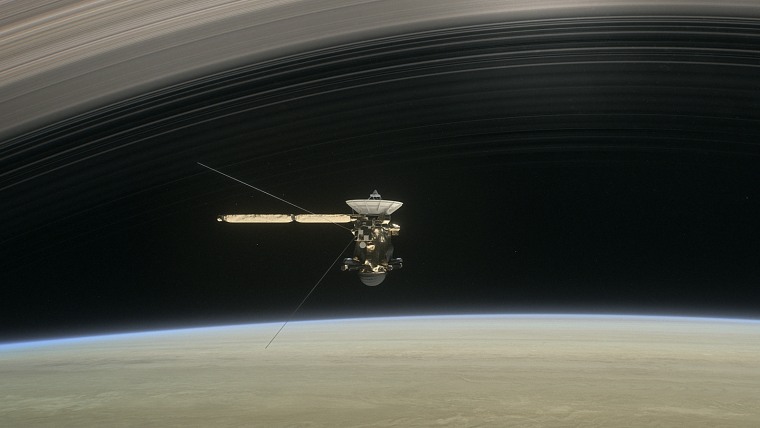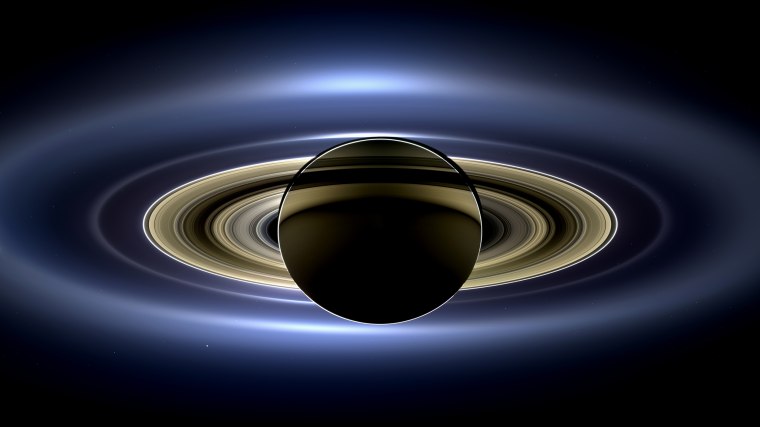Talk about ringside seats!
We’ve known about Saturn’s rings since 1610, when Galileo turned his telescope skyward and took a close look at the sixth planet from the sun. But never before have we had a view of the rings like this: a dazzling new movie made from photos snapped by the Cassini space probe show the rings from the inside out — that is, looking outward from the narrow gap between the rings and the planet itself.
The 21 photos were taken over a span of four minutes on Aug. 20 as Cassini dove through the gap. At the time, the school bus-sized craft was about 1,100 miles above the cloud tops that mark Saturn’s uppermost layer (the gas giant planet has no surface) and about the same distance from the innermost ring.
“When you consider that Saturn is some 75,000 miles (120,000 kilometers) across, and the ring system is over 170,000 miles (275,000 kilometers) across, we are really threading a needle here,” Dr. Matthew Tiscareno, a planetary scientist at the SETI Institute in Mountain View, California and one of the scientists involved in the Cassini misson, told NBC News MACH in an email.
And though the images captured by Cassini were stills, the spacecraft was anything but still. As its wide-angle camera snapped away, Cassini was speeding along at about 30 kilometers (20 miles) a second, Tiscareno said.

Cassini was launched in 1997 and has been orbiting Saturn since 2004. But with its fuel supply dwindling, the craft is in the midst of what NASA calls its “grand finale” — a series of weekly dives between Saturn and its rings, ending with a death spiral into the planet on Sept. 15.
Cassini is being sacrificed to ensure that it doesn't smash into Saturn's moon Enceladus or another of its moons that could harbor life, the Los Angeles Times reported.
In this final portion of its long mission, Cassini is still doing science. Its key goal now, mission scientist Dr. Linda Spilker told NBC News MACH in an email, will be to sample the top of Saturn’s atmosphere to determine its composition.
A joint venture of NASA, the European Space Agency, and the Italian Space Agency, Cassini was designed to explore Saturn and its complex rings and moons. It's done just that, beaming back countless images and reshaping our understanding of the solar system, Space.com reported.
Among other things, Cassini revealed that Enceladus's south pole is spouting geysers of water vapor and that another Saturn moon, Titan, has a sea of liquid hydrocarbons.
At least in the estimation of scientists associated with the mission, Cassini has done a remarkable job.

“Cassini’s findings have made the Saturn system as familiar as my own backyard, with detailed images and data on Saturn, its beautiful rings, and incredibly diverse moons,” Spilker said, adding that she found the movie “very moving and beautiful.”
Tiscareno was even more effusive, calling Cassini “the most spectacularly successful interplanetary mission in history.”
Congratulations, Cassini.


